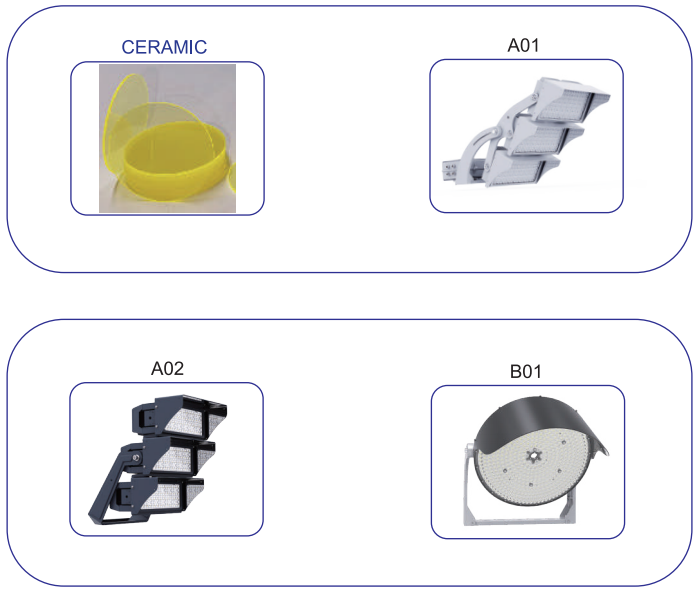High School Football Field Lighting Standards Requirements: Best High School Led Football Field Lights
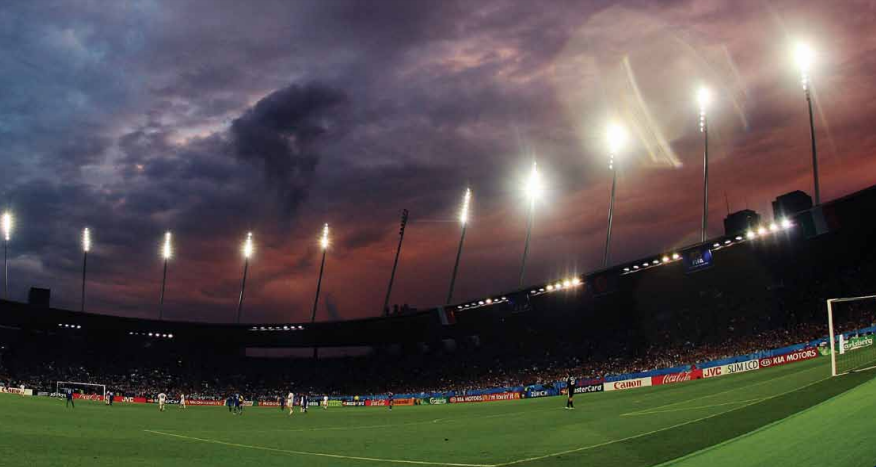
Directory:
1. Recommended Minimum Standards
2. Desirable Features
3. Typical Facility Information
4. Light Level Grid Point Layouts
5. High School Football Field Lighting Performance Testing
6. Best High School Led Football Field Lights
1. Recommended Minimum Standards
1.1 High School Field Lighting Performance
The lighting system shall provide target illuminance level over the guaranteed lifetime of the system’s operation. The Illuminating Engineering Society of North America (IESNA) “Recommended Practice for Sports and Recreational Area Lighting” RP-6-22 provides design criteria for sports facilities.

1.2 Environmental Light Control
The lighting equipment manufacturer should assess both spill and glare at all areas of concerns on adjacent properties. Manufacturers should provide both an illumination summary for spill light and an environmental glare impact summary for areas of concern. The environmental glare impact summary should show the maximum candela an observer would see when facing the brightest light source from any direction. For areas of concern, a good guideline is to keep glare from the brightest source below 7.500 candela at 150 feet. This is equal to roughly half what a low beam car headlight would be. Measurements are taken at the point of concern, at 60 inches above the ground.
1.3 Control And Monitoring System
A remote control and monitoring system will provide ease of operation and management for your facility. Manufacturers providing systems with a long-term warranty will utilize this system to ensure your lighting performs as required.
1.4 High School Football Field Lighting System Construction
A lighting system should consist of lighting, electrical, and structural components designed to work together as a system that is durable and provides safety features.
2. Desirable Features
2.1 Warranty
When comparing products, the manufacturers' warranty should also be evaluated. The quality of the warranty reflects a manufacturer's confidence in the long-term durability of their equipment. From the owner's perspective, the warranty offers the opportunity to reduce costs for equipment repair.
2.2 TV Quality Lighting
Lighting for televised events involves considerations in addition to spectators and participants. It is recommended that schools wishing to light facilities for television broadcasts use consultants and lighting manufacturers with experience and knowledge in that area.
2.3 Dimming
Additional energy savings can be obtained through the use of multi-level lighting. The multilevel lighting will allow the system to operate at the light level that is most appropriate for the activity taking place. For example, a facility may only be used for competitive play a few hours a day with the remainder being used for practice or recreational use. The multi-level lighting would allow for the lights to be operated in the high mode for competition events, while operating on a medium, or a low light level during the remainder of the time, thus conserving energy.
2.4 Entertainment Packages/Light Shows
Entertainment packages are often included in control systems and can incorporate predesigned and custom light shows, along with audio to further enhance the player and spectator experience. Some entertainment packages include automated video broadcasting for streaming video for remote spectators. It is recommended that light show equipment be hardwired for a more robust and reliable system when possible. When implementing shows at your facility, it is important to display the proper signage and announcements to ensure maximum fan enjoyment.
2.5 Auxiliary Brackets
Sports lighting manufacturers can provide accommodations for mounting auxiliary equipment such as speakers on sports lighting poles. This ensures poles will be sized to accommodate the weight, dimensions, and wind load (EPA) of the additional equipment. Brackets shall be welded to the pole and fabricated from hot-dip galvanized steel with a covered hand hole access and internal wiring in the pole.
2.6 Servicing Options
Consideration should be given to the method of servicing the top of the pole for lamp replacements and other maintenance concerns that can’t be reached with a ladder. The preferred method of servicing should be with a bucket truck or crane. However, when accessibility is restricted due to pole locations, an alternative method should be utilized. Acceptable alternative methods include steps, safety cables, and platforms.
2.7 Field Perimeter Lighting
The parking areas, major areas utilized for passage, and areas immediately bordering the facilities should be lighted to an average of approximately 2 footcandles. Care should be taken to eliminate darkly shadowed areas.
2.8 Emergency Lighting For Spectator Seating Area
Consideration should be given to providing emergency lighting for spectator seating areas in case of loss of power at indoor and outdoor facilities. Refer to local building codes for specific requirements as they apply to athletic facilities.
3. Typical Facility Information

4. Light Level Grid Point Layouts
football 360' x 180' field shown
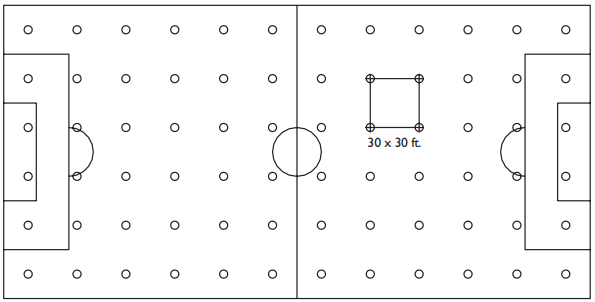
Football Field
4.1 Poles are shown in optimal locations. Other permissible pole locations are indicated by the shaded areas. All poles should be at least 20 feet from the sideline.
4.2 On a 4-pole design, the optimum pole locations are (0.35 x field length) from center of field.
4.3 In general, football lighting standards apply to soccer with the following considerations: a. A corner kick is a specific visual task and general consideration should be given to facility design specifically for soccer. b. The corner grid point shall be lit to no less than 90% of the average light level.
4.4. For combination football and soccer facilities, soccer should take precedence.
4.5 Vertical aiming angles should be 21 degrees minimum. The angles are measured from below a horizontal plane at luminaire height.
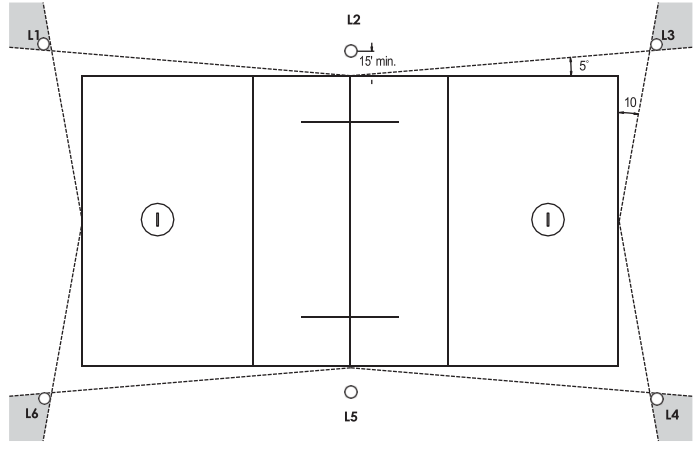
5. High School Football Field Lighting Performance Testing
To verify that your field meets the IHSA recommended standards, complete the performance testing information below. The inspection must be done using a light meter calibrated within the last 12 months. The light meter should be held horizontally 36 inches above the middle point of each square in the grid.
To obtain average footcandle value:
Record light readings within each square.
Total all readings, divide by total number of readings taken.
To obtain uniformity ratio:
Divide highest (maximum) light level reading by the lowest (minimum) light level reading:
Maximum reading____ ÷ Minimum reading____ = ____Uniformity ratio
30’ x 30’ grid
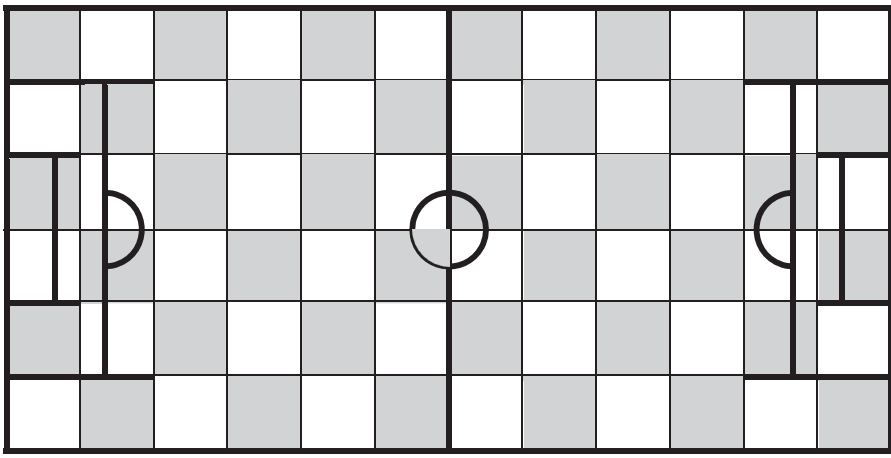
6. Best High School Led Football Field Lights
high school led football field light A01 high school led football field light A02 high school led football field light B01
